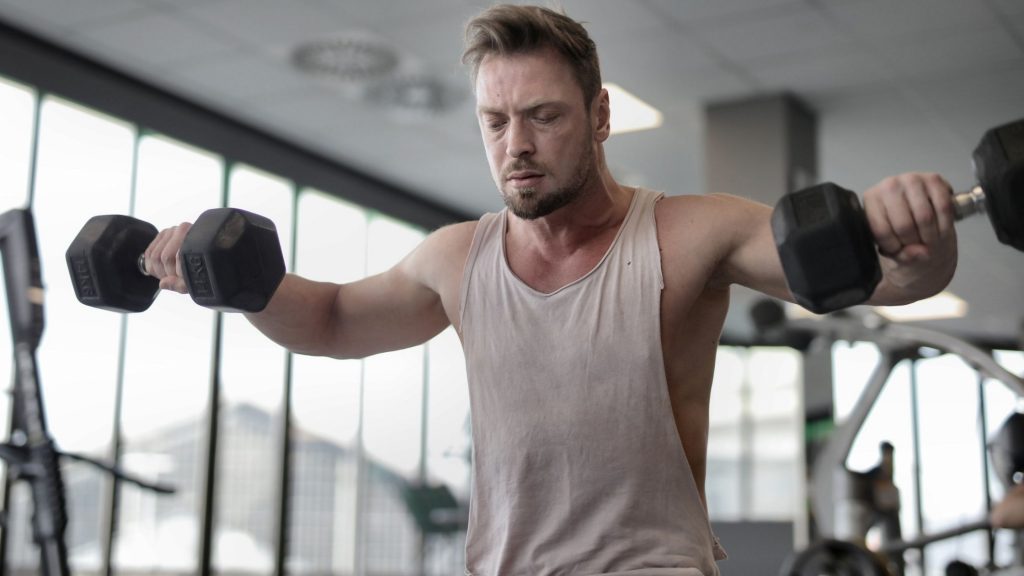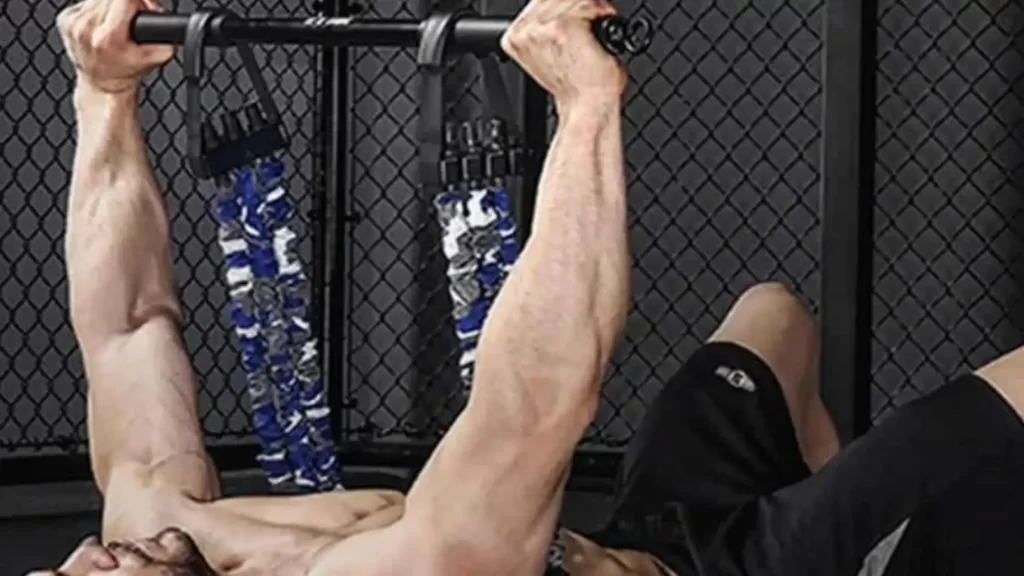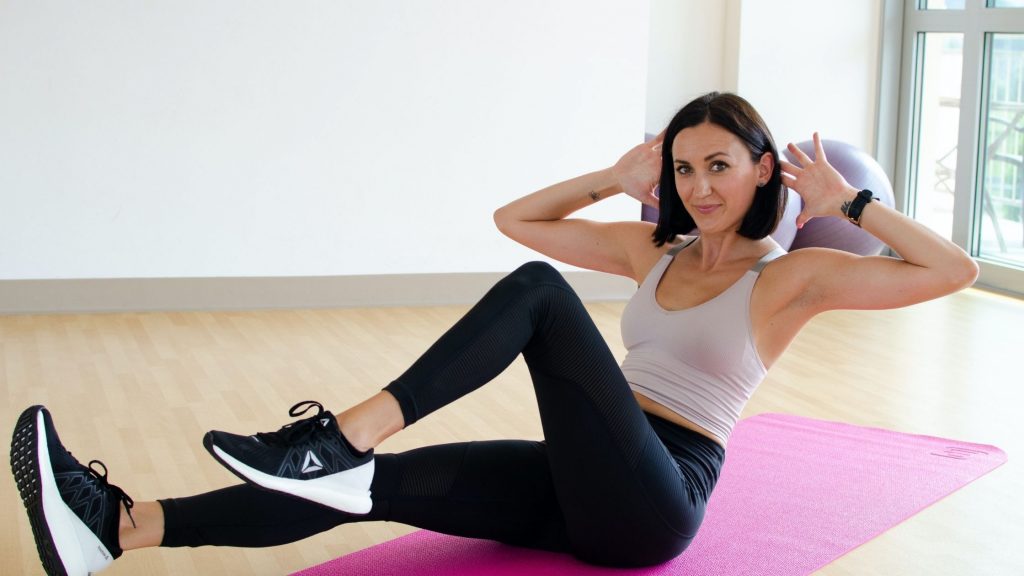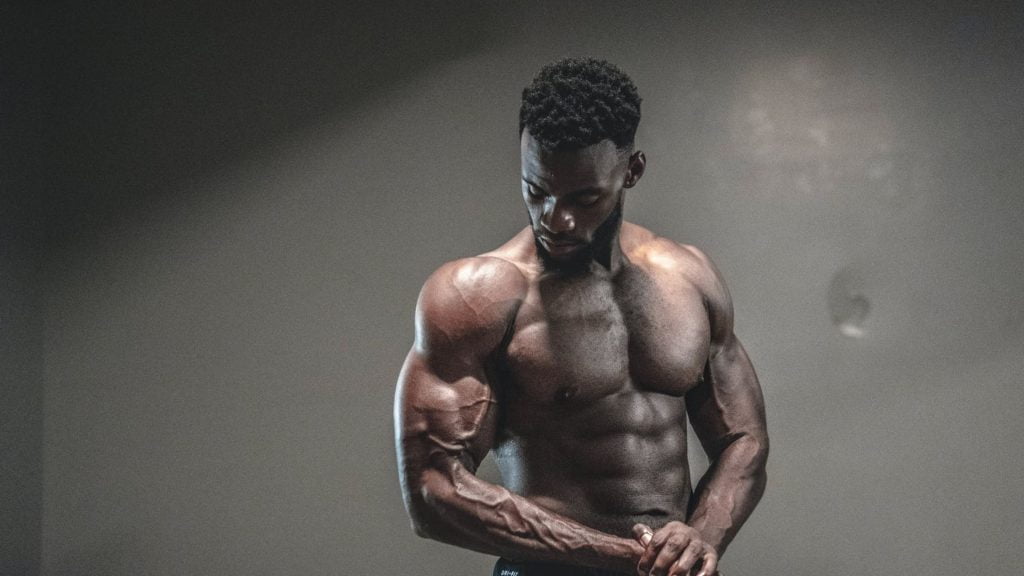The Seated Side Lateral Raise Exercise is a shoulder-strengthening exercise that focuses on the deltoid’s lateral head. If you do this on a regular basis, it will help you develop stronger, wider shoulders. Simply abduct your arms (raising the weights out and away from your body) until they create a “T” shape at your shoulders with a set of light dumbbells and sufficient shoulder flexibility.
In general, Side Lateral Raise Exercise should be performed following compound shoulder movements like the incline dumbbell press, shoulder press, push-ups, or pull-ups in upper-body strength training programs. This is similar to a front lift done with a dumbbell.

IN THIS ARTICLE
Benefits Of Seated Side Lateral Raise Exercise
Now let’s talk about the benefits of seated lateral raises. The seated lateral raise is a shoulder workout that primarily targets the deltoid muscles. Three distinct origin points (called “heads”), each with its own collection of muscular fibers, make up the deltoid muscle group. The three heads of the deltoid converge before insertion on the upper arm bone (the humerus).
The seated lateral raise isolates the deltoid muscle’s lateral head (although it also activates the anterior and posterior heads to a lesser extent). One of the most efficient workouts for training the lateral head of the delts is lateral raises.
Apart from the apparent aesthetic benefits, the exercise also helps to strengthen your shoulders independently. This may help you resolve any imbalances in strength between your right and left sides.
Because the shoulder is the body’s least stable joint, a well-rounded strength-training program that involves all three deltoid heads (as well as the rotator cuff’s stabilizing muscles) will help you maintain good shoulder health. Strong and flexible shoulders are essential for avoiding pain and injury, and side lateral raises can be part of a well-rounded shoulder training program.
ALSO READ: Barbell Clean And Press – 4 Variants, Technique & Benefits
Step-by-Step Instructions for Side Lateral Raise Exercise
Starting (Initial) Position: Sit on the bench with your chest and head up. Hold a pair of dumbbells at your sides, arms almost completely extended. Maintain a small bend in your elbow for the duration of the action. Maintain a neutral grip on the dumbbells (palms facing the body). Turn your palms toward you, in other words.
Movement (Execution): Raise your arms to the sides (straight up) until they’re parallel to the ground and your armpits form 90-degree angles. You should have a small bend in your elbows. Your hands may be slightly tilted forward. In a steady and consistent action, lower the weights back to the starting position.
Sets: 4-6
Rep: 10-12 times
Common Mistakes While Doing Seated Side Lateral Raise Exercise
Selecting Too Much Weight
As mentioned earlier, Seated Side Lateral Raise Exercise is a type of isolation exercise that focuses on a single muscle group. Furthermore, because the activity is performed using dumbbells, you can target each side of your body separately (unilaterally). Because of these two characteristics, you should use a lighter weight than you would for incline dumbbell press or dumbbell shoulder press training.
Start with low-weight dumbbells if you’re new to the workout, then adapt as needed. Starting with a lesser weight and gradually increasing it is always preferable to starting with a heavier weight and gradually increasing it. When you use too much weight, you’re more likely to do the exercise incorrectly or with undesired momentum, leading to injury.
Using Momentum to Swing the Dumbbells
When someone chooses a pair of too heavy dumbbells and refuses to switch to a lighter pair, they virtually always lift the dumbbells with momentum. They often do a forward-backward tilt of the body as they jerk the weights up and out to the sides, bouncing with their knees.
This type of momentum-inducing behavior in seated Side Lateral Raise Exercise is problematic for a variety of reasons. To begin with, you’ve lost the ability to efficiently target the muscle area that the exercise was supposed to target. You end up driving the weight upward with your legs and back rather than isolating the lateral head of the deltoid. This will prevent you from gaining the strength and hypertrophy you desire.
Second, flinging the weights up and down in this manner diminishes your control over the weight, increasing your risk of injury. To attain the best results, slow down, choose a lesser weight, and concentrate on form.
Dropping Your Head Forward
Another common blunder is executing the seated lateral raise with your neck cocked forward or your chin sunk into your chest. This happens most often when you lift too much weight or when you’re towards the end of a set, and your shoulders are exhausted.
Maintaining proper posture with a neutral neck and spine alignment is crucial throughout the activity. This prevents neck strain and ensures that you concentrate on the lateral head of the deltoid rather than your back muscles, particularly the trapezius.
Using Your Trapezius to Power the Movement
Almost every seated lateral raise mistake can be traced back to a bad weight selection. If the dumbbells are too heavy, you won’t be able to execute the exercise using the right muscle group—the deltoids—so you’ll have to rely on other muscles to help you power through.
The trapezius muscle is located in the upper back (“traps”). You’ll notice this if you start the workout by shrugging your shoulders up in an attempt to pull the dumbbells up and away from your sides. As you raise, keep a lookout for any shrugs. If you’re unsure, use a lighter set of dumbbells instead of your weights.
ALSO READ: 9 Amazing Inner Chest Workouts – For Ripped Chest
Exercise Variations
- Dumbbell Lateral Raise (Standing) is one of the most practised variation of seated lateral raise to maintain proper posture and prevent the urge to cheat by flinging the weight up with the legs rather than forcing the shoulders to do their job, standing demands a bit more discipline and expertise.
- One arm at a time, thumbs up / thumbs down. Raise the dumbbells laterally while standing.
Muscles Engaged in Seated Side Raises
Seated Side Lateral Raise Exercise works on a really important group of muscles
- Main muscles: deltoid (middle), supraspinatus;
- Secondary muscles: deltoid (front and back), trapezius and serratus anterior (especially between 90 and 150 degrees), biceps (long head), subscapularis;
- Antagonists: latissimus dorsi, pectoralis major (lower), teres majors and minors, triceps (long head), biceps (short head);
Tips For Doing Seated Side Lateral Raise Exercise
- Maintain a straight back, shoulders back, and elbows slightly bent. The majority of people bend their elbows excessively.
- As you climb and descend, make sure your upper arms are straight up and down.
- When you raise your arm, most instructors advocate internally rotating your shoulders so that your elbows are higher than your wrists and you appear to be pouring a jug of water. Your lateral deltoid will be better targeted as a result.
- It does, however, increase the chances of shoulder impingement! Externally rotating your shoulders and leaning forward a little, as instructed above and in the video, can lessen the chance of shoulder impingement while also better targeting the lateral deltoid.
- Of course, you may do the dumbbell lateral raise while standing. The seated lateral raise with Dumbbell, on the other hand, limits your capacity to deceive.
Safety and Precautions
One of the most effective ways to avoid injury while completing a seated lateral raise is to keep your arms at a 90-degree angle. Preventing injuries also requires choosing the right weight for you. Examine all of the frequent blunders—all of which are linked to poor weight selection—and if you find yourself committing one, replace your dumbbells with a lighter pair.
The Side Lateral Raise Exercise is a typically safe action, but if you experience any sudden or intense discomfort during the exercise, stop doing it. You can try it again with the bent-arm modification to see if it helps, but if the pain persists, you should stop exercising for the day.
FAQ
Are seated lateral raises better than standing?
The majority of men perform lateral lifts while standing or sitting. These are OK, but if you really want to work on your shoulders, try Chabot’s variation, which has you sitting on the upright bench.
How many lateral raises should I do?
With excellent form, aim for 10-12 reps. When it comes to completing lateral raises correctly and safely, choosing the right weight is crucial. Even with very small weights, the final few lifts will be difficult, so there’s no need to try to impress by using the heaviest dumbbell.
What is a good weight for a lateral raise?
With some reliable dumbbells, you can perform a typical side lat lift. Depending on your fitness level, aim for a weight of 2 to 10 pounds each.
Closing Thoughts
The side of your shoulder is targeted with a seated dumbbell side lateral raise exercise (lateral head). This is a single-joint isolation exercise for improving shoulder growth.
Standing is also an option for this side deltoid workout. You may avoid cheating on this shoulder exercise by doing it seated with your back flat on the back of a chair. As a result, you’ll be able to lift less weight while paying more attention to your shoulders. It’s important to remember that swinging the dumbbells up with the motion of your body will not sufficiently work your shoulders.
Use seated dumbbell Side Lateral Raise Exercise in conjunction with compound activities like the shoulder press to generate powerful-looking shoulders. It’s difficult to find a professional bodybuilder who hasn’t used lateral rises at some time in their career.













